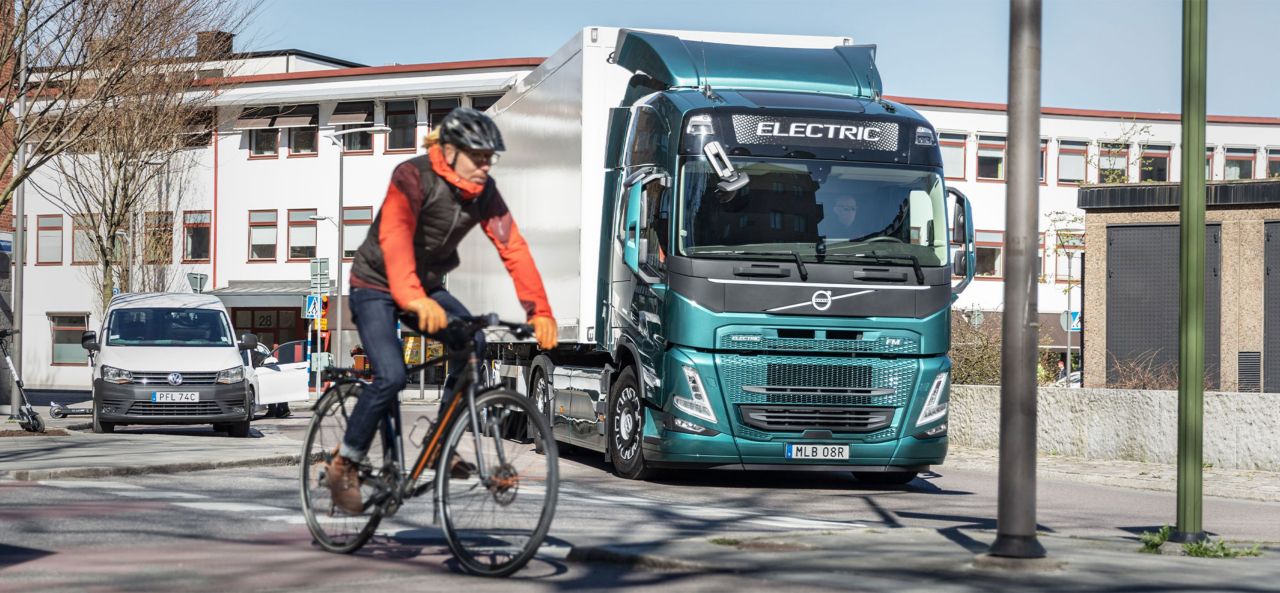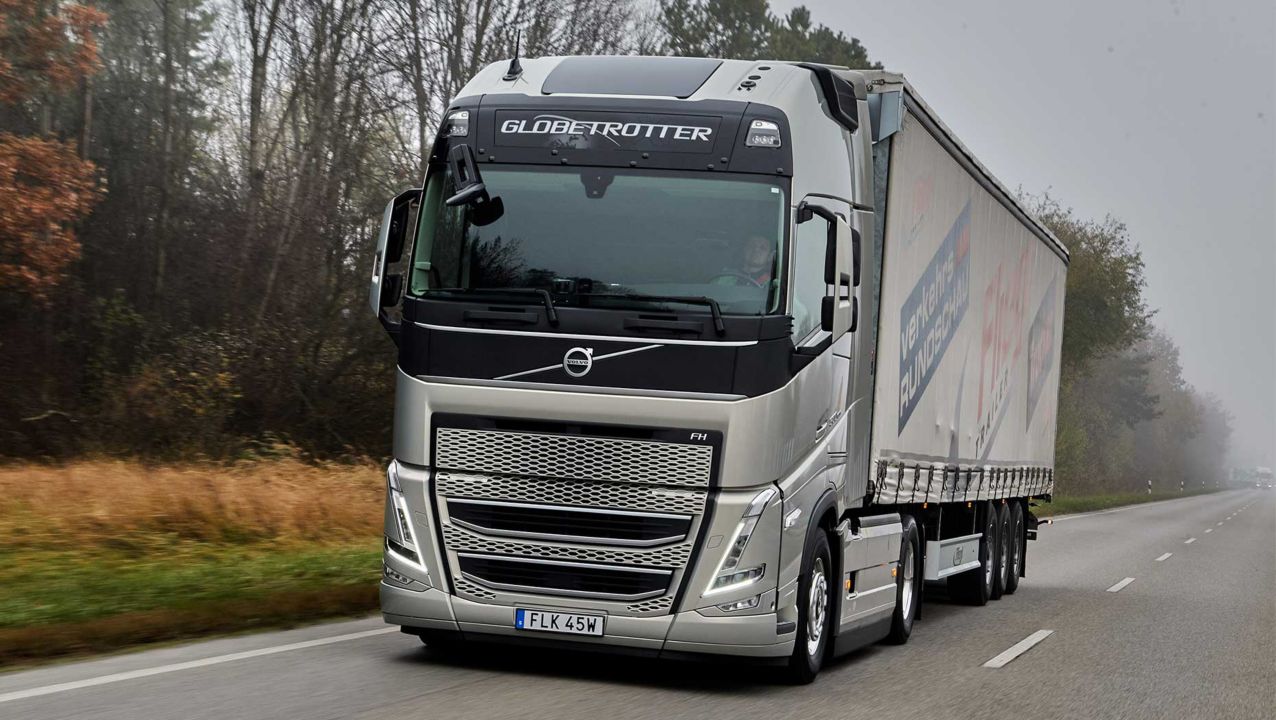Updates to the aerodynamic design of the Volvo FH will further reduce flow separation and pressure drag, and by extension, help save even more fuel in long haul operations.
Overcoming air resistance is a significant contributor to a truck’s fuel consumption when driving at speeds from around 50-60 km/h and onwards. Its effect on fuel consumption increases exponentially the faster you drive.
The goal: To minimise and delay flow separation
Aerodynamic design has therefore long been one of Volvo Trucks’ most important focus areas when it comes to reducing the fuel consumption of its vehicles. Its engineers are continuously working with wind tunnels and simulations to identify further improvements. One of their key aims is to delay flow separation. This is when a layer of air flow detaches from the truck’s surface. The earlier it detaches, the larger the wake behind the vehicle and therefore the higher the pressure drag. Minimising and delaying flow separation, therefore minimises pressure drag.
“The flow greatly accelerates as it goes from the stagnation point in front of the truck (high pressure) over to the sides (low pressure),” explains Anders Tenstam, Aerodynamics Specialist, Volvo Trucks. “If a truck is driving at 90 km/h, then the flow velocity at the corners can reach speeds as high as 200 km/h. This makes the front corners a very sensitive region, and any small object or gap can have a huge impact on the overall air flow.”
Mastering the small details
In their most recent simulations and tests, Volvo Trucks’ engineers were able to identify a number of small gaps and split lines on the truck’s exterior, that could further improve aerodynamics if sealed.
“We could see that split lines and gaps can be crucial depending on where they are situated,” says Mattias Hejdesten, Engineering Specialist Aerodynamics, Volvo Trucks. “They allow air flow to seep in behind the front panels, which then gets sucked out in the low-pressure regions on the cab’s sides. From there, it can trigger flow separation when it interacts with the external air flow.”
To help stem these leakage flows, new seals have been placed between the various front panels. As a result, any triggering of flow separation at the vehicle’s front corners is eliminated, helping the external flow to stay attached to the vehicle’s sides for longer.
“Truck aerodynamics is a lot about mastering the small details,” says Anders Tenstam. “The truck cab is a workplace with many legal restrictions and considerations, so there is a constant battle for every millimetre of available space, to accommodate all essential functions.”
New seals opened up for more improvements
By adding these seals, not only does it improve overall aerodynamics, it also opens up additional opportunities for improvements further along the vehicle. These improvements include adding an extended door extension to fill the void in the footstep box. This creates a flat surface for the external air flow to attach to, thus further reducing flow separation. Using wider wheels and mud guards create more alignment, while a new fender flare reduces the gap from the wheel. This results in reduced evacuation flow from the wheelhouse and by extension less aerodynamic drag. Finally, new curved designs for the mirror arm covers with smaller peak holes also help reduce flow separation.
“By improving the conditions at the front of the truck, we can suddenly see some opportunities to maintain an aligned flow along the sides too,” explains Mattias Hejdesten. “Otherwise, if we had not done this, we would have seen minimal benefits from these additional aerodynamic improvements.”
In fact, each of these aerodynamic improvements have been optimised to complement each other. While each individual update will make its own contribution to improve the vehicle’s energy efficiency and reduce fuel consumption, the savings generated when combined together in one package will be greater than the sum of all parts.
Want to know more about how to reduce fuel consumption? Read more here.


